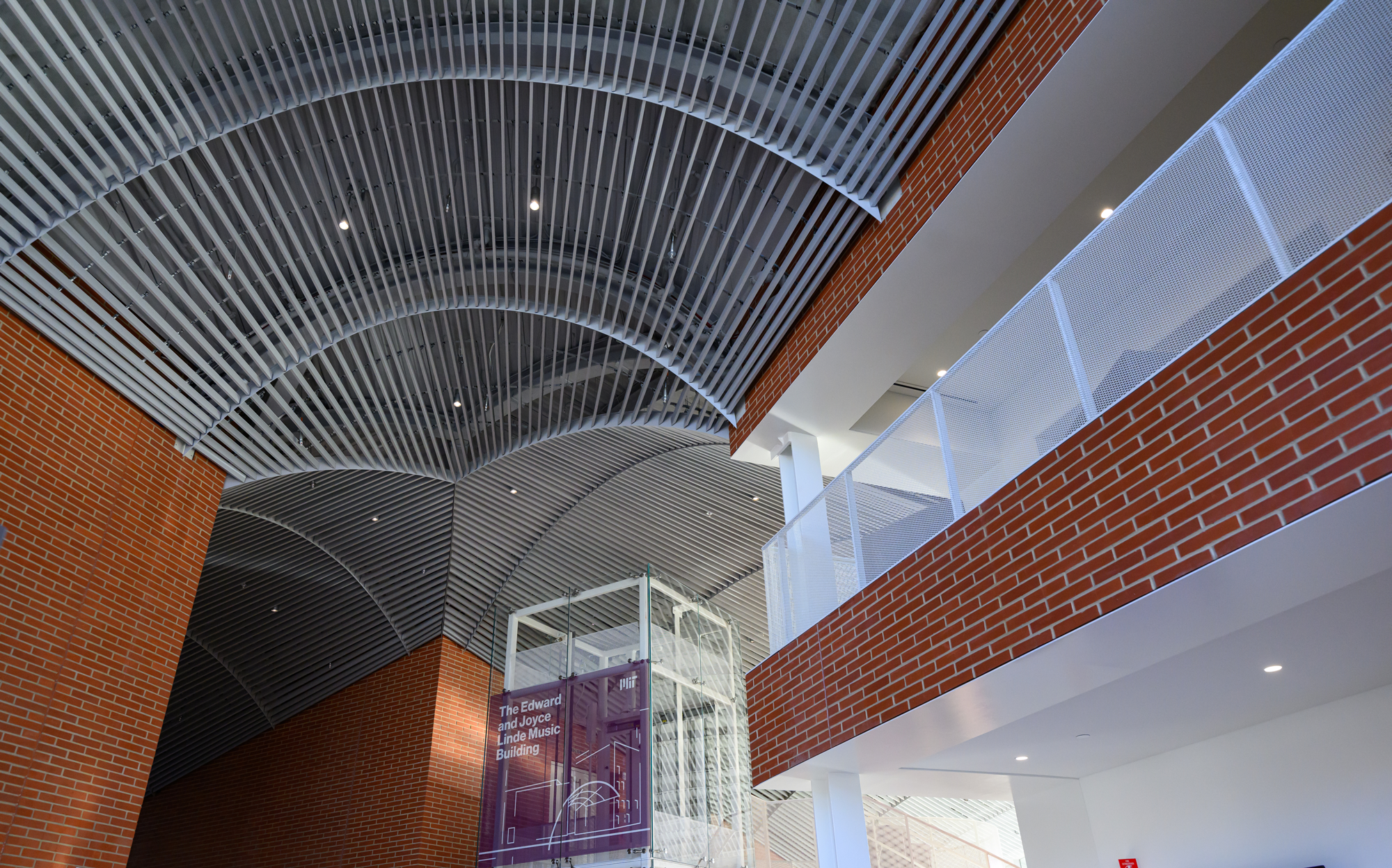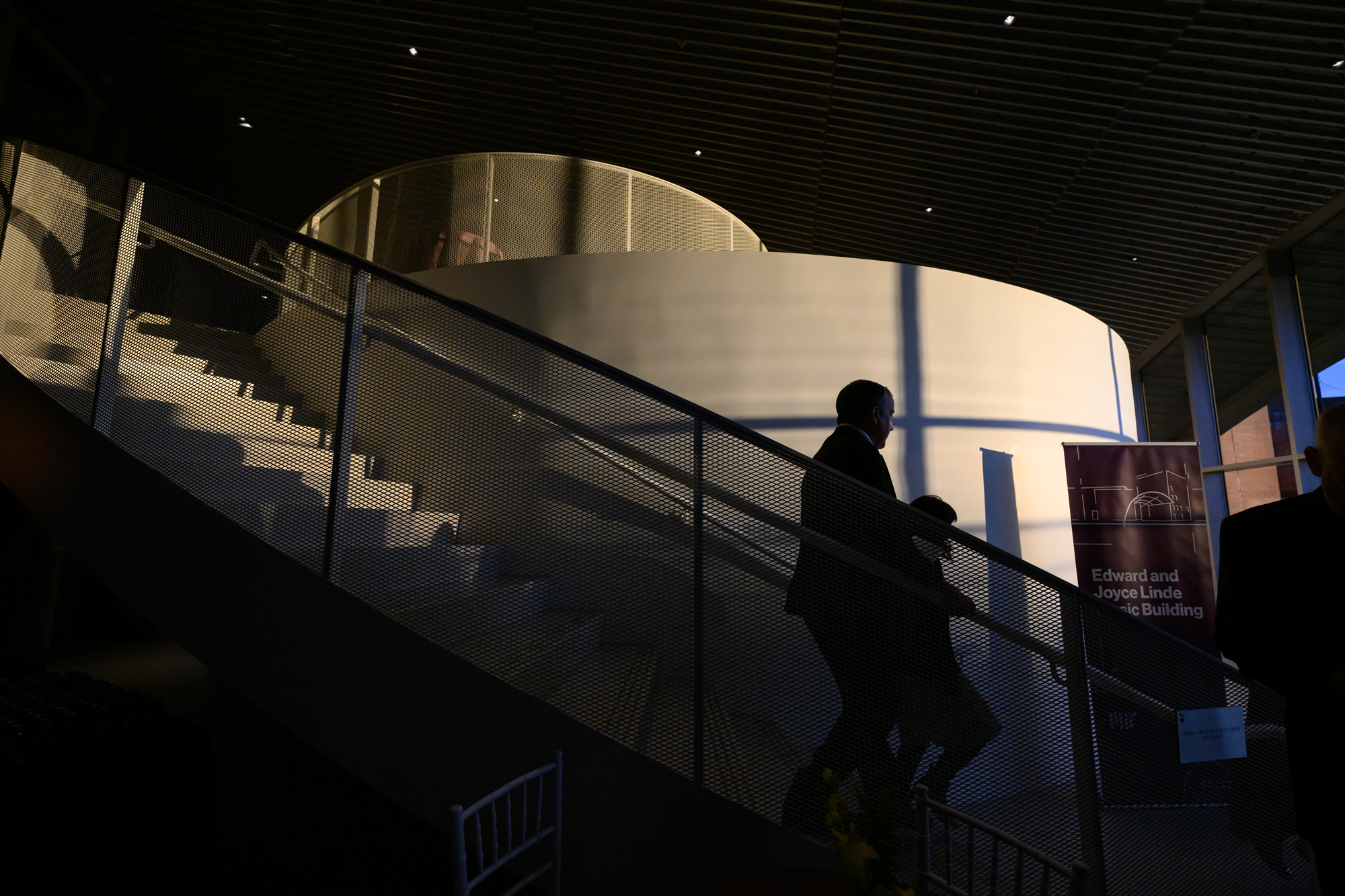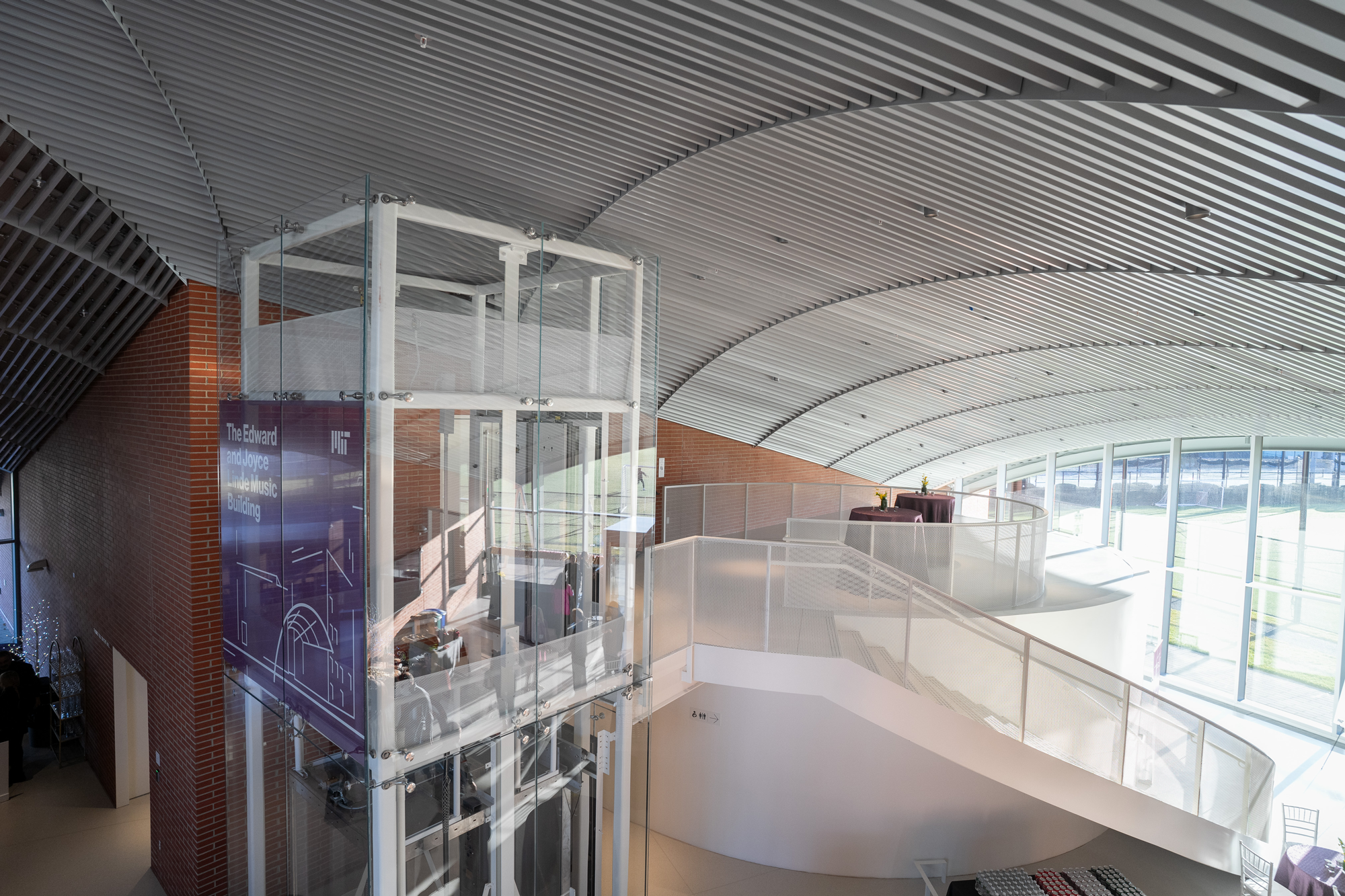
PHOTO: FAITH NINIVAGGI
More than 500 student musicians participate in one of 30 ensembles, chamber groups, or advanced music programs on campus in any given semester—and that’s not to mention the more than 1,500 students enrolled in music classes each semester, or the elite musician scholars in the Emerson/Harris Program for Private Study.
Stray musical notes in non-soundproof spaces may delight passersby, but such conditions can be difficult for musicians—and their neighbors. Similarly, lack of specially designed space for large instruments and music technology equipment has been a challenge on campus.
Now, students, faculty, and appreciators of the arts have their own “clean lab” specifically designed for music-making that provides much-needed musical spaces: the Edward and Joyce Linde Music Building (W18). The building officially opened to the MIT community in February 2025.
MIT chose SANAA, a Tokyo-based architectural firm, due to their reputation for creating beautiful buildings with special attention to acoustics. In the new music building, MIT has not only created a place for students to learn and practice together, but also to facilitate further connections. Thoughtfully designed spaces—many of which are supported by generous gifts from MIT alumni and friends—encourage collaboration and friendships through the study, performance, and appreciation of music.
Thomas Tull Concert Hall
With its impeccable, adjustable acoustics and adaptable staging capabilities, the Thomas Tull Concert Hall is the most advanced music teaching and performance space that the Institute has ever constructed. Seating 390 audience members, the hall is the new premier space for musical performance at the Institute.
The Beatrice and Stephen Erdely Music and Culture Space
Music and Culture programming at MIT is increasingly popular, including the hands-on workshops for the many sections of 21M.030 Introduction to World Music, one of the music classes with the highest enrollment rates. The program’s larger and rarer instruments, such as the Balinese gamelan and drums used by the Rambax Senegalese Drum Ensemble, now have a permanent and more easily accessible storage area in the Music and Culture Space.
Jae S. and Kyuho Lim Music Maker Pavilion
Classrooms, rehearsal spaces, and technical spaces in the Jae S. and Kyuho Lim Music Maker Pavilion, where students will develop state-of-the-art production tools, software, and musical instruments, are outfitted to create a nearly ideal sound environment. A research lab supports the hybrid exploration of music and computation, and a makerspace is outfitted for hands-on construction and rapid prototyping of hardware, facilitating further interdisciplinary collaboration. A recording studio, a new resource for the MIT campus, is also in the building, offering professional-level recording for all types of instruments and ensembles.
Analog Devices Lobby
The lobby that unites the three building sections is a venue for everyday interactions as well as a spacious, light-filled venue for events. This entry point extends a welcome to MIT and the broader community, whether they are seasoned musicians or those newly discovering the power of the arts. “For the students rehearsing and performing, or the students who compose music, or for the students who will develop the hardware and software that engineers will use to produce music, the problem-solving inherent in those activities is very similar to what they do in STEM. Both are creative processes,” says Keeril Makan, associate dean for strategic initiatives for the School of Humanities, Arts, and Social Sciences and former head of the Music & Theater Arts Section. “Having this building, right in the middle of our campus, makes it clear that this centering is important to MIT and its mission.”
THE HUMAN ELEMENT
Music and Technology Intertwined
Graduate program in music technology and computation brings new dimension to interdisciplinary offerings
THE HUMAN ELEMENT
Digital Instruments for Musical Togetherness
Engineering graduate student Joseph Ntaimo ’23 builds instruments that “empower people to jam with each other”






